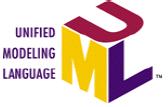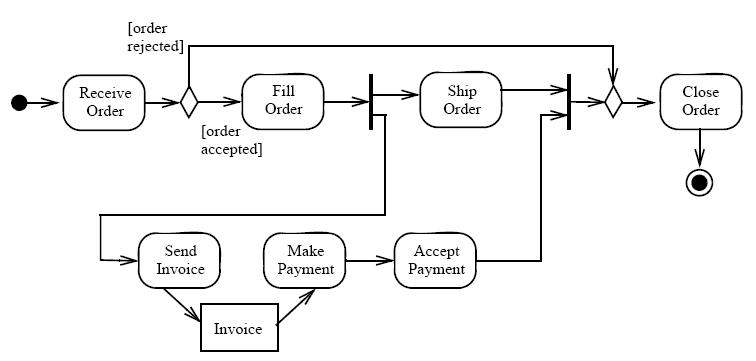So what's the point?
The point is the visual modeling tools help the web designer to understand from a high level what the customer wants.
Notice the example below.
As a web designer the activities of the web site have to be considered as a part of the design. In other words the designer has to have a functional idea of what the site will be and have an understanding of the business process involved. Not all of the requirements are web pages that take in or display information but some are.
In this example the capability to sell is required and that means to be able to take an order, the ability to take a payment, display payments made, orders taken previously, the status of the order, how it was shipped etc, etc, etc. There may be one page or several pages or overlays to the site that deal with this. The Amazon web site is a good example. There is the credit card address and the shipping address that has to be entered, the shipping type that affects the payment that has to be selected, a note on the order that may be desired by the purchaser, and the screen that shows the accepted order or the rejected order. All of these requirements reflect the design of the site artistically. The pleasing display of the functions and the flow and ease of use of the various pieces.
It is not easy to get all the requirements from the clients before starting the design of the site. Sometimes they just don't know until they see it. Then ideas start to come and the web designer is stuck in the position of working and re-working the design and functionality of the site. So what is the answer to this dilemma?
Part of the answer is to ask lots of questions about the functions and intricate behaviors required. Try to model the business process, the use cases and the activity model with swim lanes. This can all be done on paper but a modeling package is much more fun. Next is to do a mock up of each page and show it to the client, and develop the site using an "Agile" methodology. See the "Be Agile" page.
The following is an example from the OMG Unified Modeling Language (OMG UML) Superstructure, V2.1.2.
© Copyright 2008, Lonnie Percent The information provided in this site is for informational purposes only. The information is provided “as is” with in implied or expressed warranty for accuracy. The content within may be distributed for non-commercial and educational purposes only.

